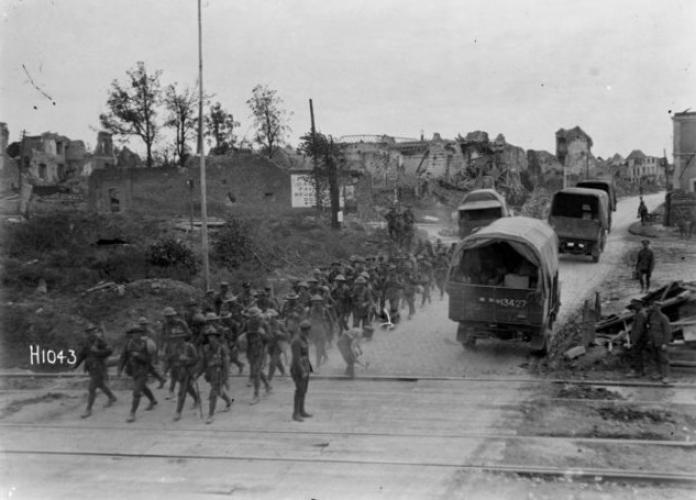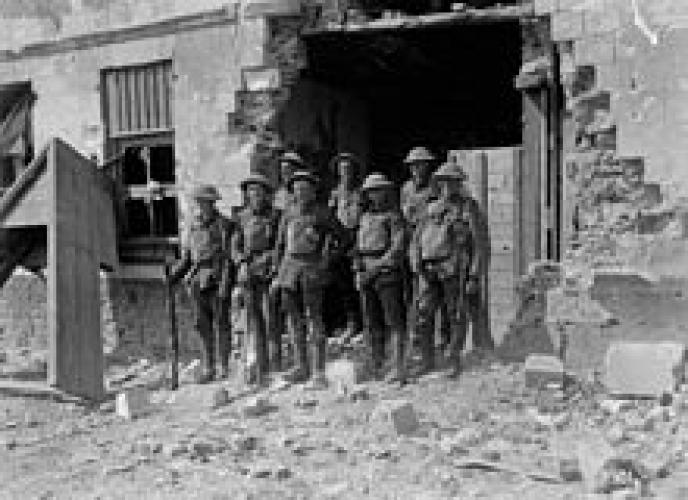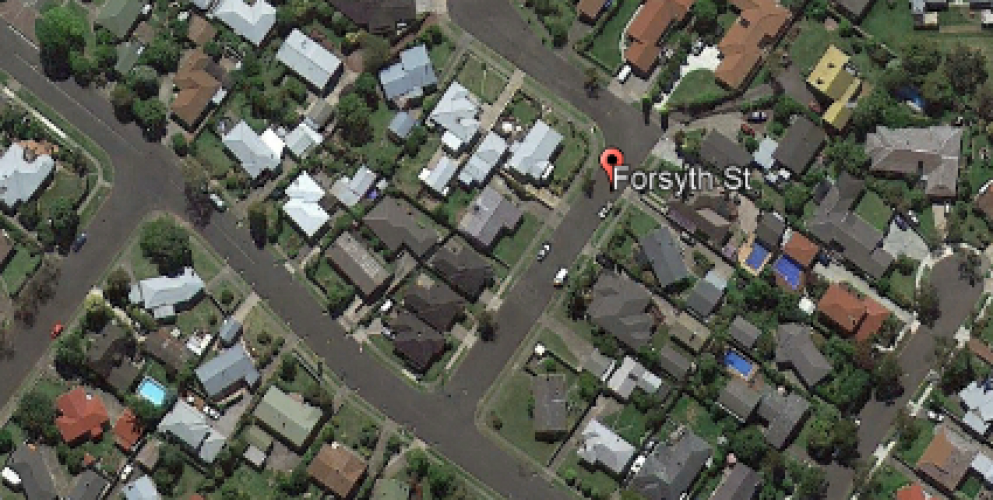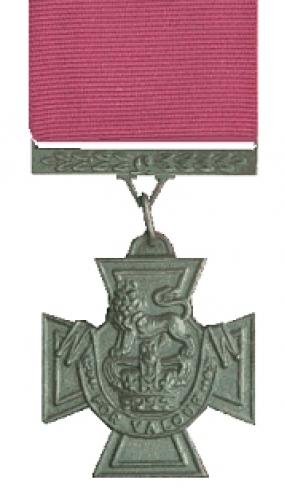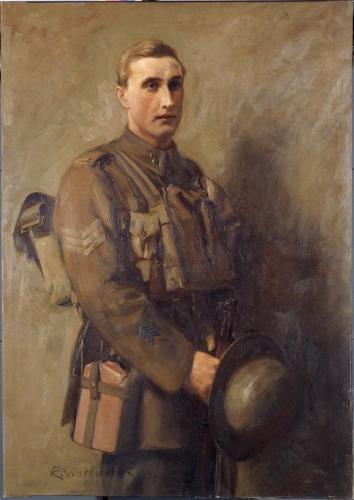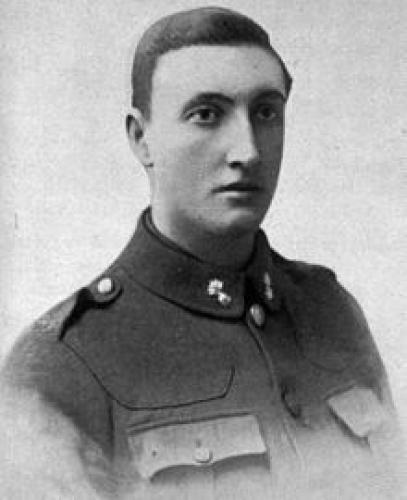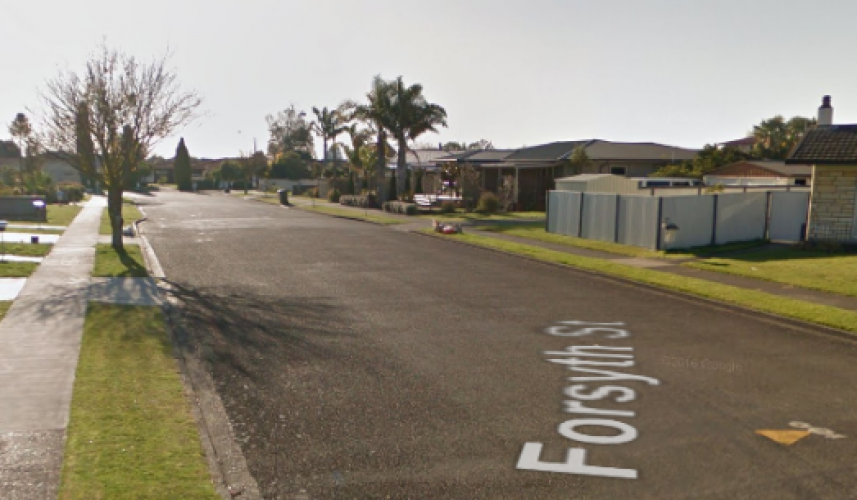226 Forsyth Street Taradale, Napier, street scene 2018
Reason for the name
This Taradale Street was named in honour of Sergeant Samuel Forsyth, VC. Forsyth won a posthumous Victoria Cross (VC) for destroying enemy machine-gun posts during an attack on the French town of Grévillers on 24 August 1918.
The Napier City Council has named many streets in Taradale after Victoria Cross winners. This small residential street is named in honour of Sergeant Samuel Forsyth who received his award posthumously.
The Victoria Cross is a military decoration awarded for valour of the British and Commonwealth forces. The highest and most prestigious award for gallantry in the face of the enemy, it was first instituted by Queen Victoria in 1856 after the Crimean War. Officially there have been 22 Imperial Victoria Crosses awarded to New Zealand military personnel. These awards were bestowed upon 21 individuals, with Charles Upham receiving the award on two separate occasions.
Wellingtonian Samuel Forsyth was 23 and unemployed when he signed up, days after the war started. Previously he had worked in gold processing for the Monowai mining company in Thames. Forsyth was injured by an exploding shell at Gallipoli. After hospital treatment at Cairo, he returned to the Ottoman battlefield and was later invalided to England suffering jaundice. A deeply religious man who evangelised among the troops in his time off, he married a YMCA sub-matron, Mary Gairdner, in Scotland in January 1917.
Aged 27, he was killed by a sniper's bullet in August 1918 during the action for which he was awarded the Victoria Cross. This was in the attack at the town of Grevillers, part of the Battle of Bapaume. Sergeant Forsyth was cited as a "dashing" leader who displayed a "total disregard of danger". He had led his men to rush and take three machine-gun positions. Wounded, he manoeuvred alongside a British tank until it was disabled. He organised its crew, with his men, to drive off several machine-gun units.
Author: The Poppy Places Trust
Samuel Forsyth (1891-1918) enlisted in the New Zealand Expeditionary Force at the outbreak of war in 1914, and sailed with the main body to Egypt. He fought at Gallipoli where he received a slight wound, and was evacuated twice with illness. He was seconded to 2nd Auckland Battalion in August 1918, and was posthumously awarded the VC for his actions at Grevillers, France, on 24 August 1918:
“For most conspicuous gallantry and devotion to duty in attack. On nearing the objective, his company came under heavy machine gun fire. Through Sergeant Forsyth's dashing leadership and total disregard for danger, three machine gun positions were rushed and the crews taken prisoner before they could inflict many casualties on our troops. During a subsequent advance his company came under heavy fire from several machine guns, two of which he located by a reconnaissance. In his endeavour to gain support from a tank, he was wounded, but, after having the wound bandaged, he again got in touch with the tank which, in face of very heavy fire from machine guns and anti-tank guns, he endeavoured to lead, with magnificent coolness, to a favourable position. The tank, however, was put out of action. Sergeant Forsyth then organised the tank crew and several of his men into a section, and led them to a position where the machine guns could be outflanked. Always under heavy fire, he directed them into a position which brought about a retirement of the enemy machine guns and enabled the advance to continue. This gallant NCO was at that moment killed by a sniper. From the commencement of the attack until the time of his death, Sergeant Forsyth's courage and coolness, combined with great power and initiative, proved an invaluable incentive to all who were with him, and he undoubtedly saved many casualties among his comrades." [London Gazette, 18 October 1918]
Forsyth was killed during the Second Battle of Bapaume which was a battle of the First World War that took place at Bapaume in France, from 21 August 1918 to 3 September 1918. It was a continuation of the Battle of Albert and is also referred to as the second phase of that battle. The British and Dominion attack was part of what was later known as the Allies' Hundred Days Offensive.
The Second Battle of Bapaume was carried out over a period of two weeks and involved the divisions of IV Corps; the British 5th, 37th, 42nd, and the 63rd Divisions along with the New Zealand Division. On 29 August, elements of the New Zealand Division, after heavy fighting in the days prior, occupied Bapaume as the defending Germans withdrew. It then pushed onto the Bancourt Ridge, to the east of Bapaume.

